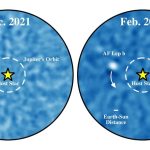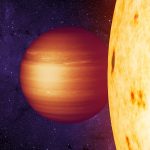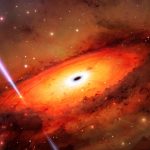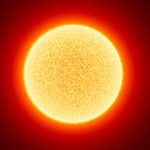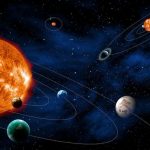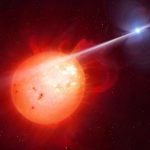Meet the younger cousin of Jupiter: Astronomers discover a low-mass exoplanet like never before
Jupiter has a 'younger sibling' residing 87.5 light years away, and for the first time, we've managed to snap a picture of it!
An extraordinary...
Saturn’s moon Enceladus harbors phosphates, a ‘building block of life’, shows study
Researchers report that water on Enceladus, one of Saturn’s moons, holds phosphates.
The team used data from NASA’s Cassini space mission to detect evidence of...
A brown dwarf is getting hit with so much radiation it’s hotter than the...
Hot Jupiters are large gas planets that orbit their star closely.
Unlike our Jupiter, which radiates more heat than it gets from the Sun, hot...
Scientists discover a new way stars could explode
Ever thought about how stars end their life cycle?
Normally, they either shed their layers and become white dwarfs, explode in a supernova, or collide...
Exoplanet may reveal secrets about the edge of habitability
How close can a rocky planet be to a star, and still sustain water and life?
A recently discovered exoplanet may be key to solving...
Where was the sun? Here’s why astronomers are more useful in court cases than...
Over the past eight years, I have been asked to submit astronomical evidence for court cases all over Australia.
Normally when we think of evidence...
Can we predict if a system will have giant planets
Prediction is one of the hallmarks of scientific endeavors. Scientists pride themselves on being able to predict physical realities based on inputs.
So it should...
Astronomers find a white dwarf pulsar
When astronomers talk about the “end states” of stellar evolution, several categories come to mind: black holes, neutron stars/pulsars, and white dwarfs.
What happens if...
Scientists use special stars to measure galaxy distances
Think about the sky on a clear night, filled with countless twinkling stars.
Now, imagine if you could use these stars to measure the distance...
NASA’s Webb unravels mystery of rocky exoplanet TRAPPIST-1 c
NASA's James Webb Space Telescope has brought us some exciting news about TRAPPIST-1 c, a planet located 40 light-years away from Earth.

